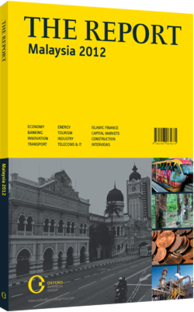OBG talks to Francis Gurry, Director-General, World Intellectual Property Organisation (WIPO)

Interview: Francis Gurry
How can governments assist in the promotion of innovative thinking in competitive, free markets?
FRANCIS GURRY: Competitive market forces by themselves often induce companies to innovate. By commercialising a superior technology, companies can gain an edge on their rivals and improve their bottom line. In fact, in some sectors – mobile telephones, for example – competition has intensified to the degree that companies have to innovate just to stay in business.
However, it is also true that markets by themselves sometimes fail to provide optimal conditions for innovation. For example, companies may find it hard to secure financing to fund research and development (R&D) activities that have a high failure risk, or they may shun R&D that leads to knowledge that can be easily copied by their rivals. Government policies – from fiscal R&D incentives to the protection of intellectual property – play an important role and they can thus help to mobilise market forces that foster innovation.
In your opinion, what can be done to spur innovation from private sector players?
GURRY: It is important to keep numbers in perspective here. Just because one does not see a lot of patenting in a particular segment of the economy does not mean that there is no innovation. Invariably, some industries rely on the patent system more than others.
In addition, data show that the private sector accounts for the majority of R&D spending in Malaysia, which indeed does not hold for many other middle-income countries. Having said that, a fertile climate for innovation cannot be engineered overnight; it requires a long-term commitment from all stakeholders and the maturing of relevant institutions.
What are the major challenges for ASEAN in increasing commercialisation of intellectual property (IP)?
GURRY: One should first commend ASEAN’s rapid economic development. Real income in the region has nearly doubled between 1990 and 2008 – notwithstanding the Asian financial crisis in the second half of the 1990s. While not the only factor, the integration of ASEAN economies into global manufacturing production networks had much to do with this success.
Yet it is also true that for the region to sustain rapid economic growth and promote the generation of better-paying jobs, there is a need to shift the economic structure toward innovation-based activities. There are some encouraging signs this is happening, but more is needed. In line with this, the IP infrastructure must mature and balance the needs of an increasingly sophisticated IP user base with the general public’s interests.
In what ways can foreign multinationals help stimulate IP filings in emerging markets?
GURRY: Multinational companies are increasingly diversify their R&D activities and are, indeed, investing more in emerging markets that offer not only lower labour costs but also new, innovative talent. With them, they bring new ideas, organisational know-how, and experience in commercialising new products and technologies. These “intangible assets” can then spill over to local companies – suppliers, customers or competitors – and can enlarge an economy’s innovative capacity.
How can greater cooperation between universities and the private sector be encouraged?
GURRY: Putting in place the right frameworks for technology transfer is the key. Most countries in ASEAN have initiated policy reforms in this respect – both at the national level and the university level.
We have learned through experience that we must clearly define disclosure and IP policies at research institutions; establish appropriate performance incentives for researchers; and put in place institutions that provide a bridge between research labs and the commercial sector. It is also important to recognise that university technology transfer goes beyond patenting and licensing technology; it also can occur through scientific publishing, R&D activities, and other channels.
You have reached the limit of premium articles you can view for free.
Choose from the options below to purchase print or digital editions of our Reports. You can also purchase a website subscription giving you unlimited access to all of our Reports online for 12 months.
If you have already purchased this Report or have a website subscription, please login to continue.

